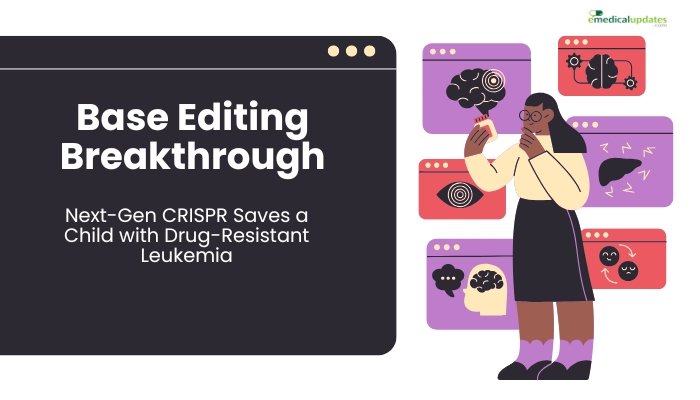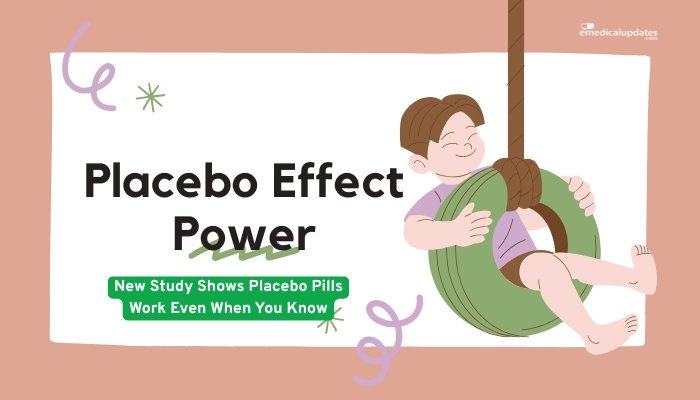Introduction
Traditional treatments for drug-resistant leukemia—particularly in children—can exhaust standard chemotherapy options or even advanced CAR T-cell therapies. Now, a new variant of CRISPR gene editing called base editing has yielded a striking success story: a child with otherwise incurable leukemia achieving remission.
This technique refines standard CRISPR’s approach to more precisely and efficiently alter DNA bases, offering fewer off-target effects. Below, we explore how base editing works, the details of this remarkable case, and what it could mean for future cancer therapies.
The Child with Drug-Resistant Leukemia
Persistent Resistance to Treatments
When standard chemotherapy and first-generation CAR T-cell therapies fail, patients with acute lymphoblastic leukemia (ALL) or other forms face bleak outcomes. Some children endure multiple relapses, developing new mutations that undermine conventional approaches.
Urgent Need for Novel Therapy
For these “last-resort” cases, every trial or experimental therapy can be a lifeline. Enter base-edited CAR T-cells—where advanced genetic engineering addresses previously unworkable obstacles to remission.
What Is Base Editing?
Evolution from CRISPR-Cas9
CRISPR-Cas9 typically cuts DNA, then relies on cellular repair. This can cause disruptions or small insertions/deletions. Base editing modifies single bases (like A→G or C→T) without fully cutting the DNA strand:
- Deaminase Enzyme Fusions: Linked to a “dead” or “nicking” Cas protein that guides the enzyme to a specific site.
- Precision: The target base is chemically converted, decreasing the risk of large unintended edits and complex repairs.
Advantages
- Fewer Off-Target Effects: More controlled changes minimize random DNA breaks.
- Correcting Single Mutations: Many disease-causing mutations revolve around one base. Base editors can fix these quickly and stably.
The Breakthrough in Leukemia Treatment
Base-Edited CAR T-cells
In this child’s case, researchers used base editing to:
- Create Universal T-cells: Donor T-cells engineered to target leukemia but also modified to reduce rejection or auto-immune reactions.
- Overcome Drug Resistance: Edits neutralized certain genes that the leukemia exploits, including eliminating T-cell markers the cancer might hijack.
- Enhance Safety: By carefully controlling which genes are switched off or on, the risk of “off-target” tissue attacks is mitigated.
Remarkable Remission
After infusion, these base-edited T-cells proliferated and attacked malignant cells, leading to a dramatic remission—apparently clearing the leukemia that withstood prior treatments. Ongoing monitoring ensures it remains durable and free of harmful side effects.
Significance and Potential
- New Lifeline for Difficult Cases: For children with advanced, drug-resistant blood cancers, base editing offers a potent therapy where classic CRISPR or older CAR T-cell approaches might fail.
- Accelerated Gene Editing: The refined precision might open the door to tackling other inherited diseases or robust immunotherapy expansions.
- Wider Access: Ultimately, universal or “off-the-shelf” T-cells could reduce costs, wait times, and complexities in obtaining personalized therapies.
Challenges and Future Steps
Larger Clinical Trials
This success story, though remarkable, remains an early demonstration. Researchers aim for multi-patient Phase I/II studies to confirm whether base editing reliably produces remission in more children and adult patients.
Long-Term Durability and Safety
Years of follow-up will clarify whether the base-edited cells maintain their anti-cancer effect without major side effects, such as off-target mutations or unforeseen immune reactions.
Regulatory Path and Scale
Obtaining FDA and other regulatory clearances for gene therapies is rigorous. Manufacturing capacity must scale to make complex, gene-edited T-cells widely available.
Frequently Asked Questions
- How does base editing differ from normal CRISPR-Cas9?
- Standard CRISPR makes double-stranded DNA breaks. Base editing more precisely switches one DNA base to another without big cuts, reducing unintended disruptions.
- Is this therapy available to all leukemia patients now?
- Not yet. This is an experimental approach used in a special, life-threatening scenario. Wider availability depends on more trials, regulatory approvals, and manufacturing readiness.
- Does the therapy cure the leukemia permanently?
- It’s early to claim “cure.” The child in question achieved remission, but long-term data is needed to see if the cancer might return or if new side effects emerge over time.
- Are there ethical concerns about editing T-cells with base editing?
- As with all gene editing, oversight ensures the procedure is safe and limited to somatic (non-inheritable) cells. Ethical concerns are fewer than for germline editing, but caution remains necessary.
- Could base editing help other diseases too?
- Yes, many research programs explore base editing for inherited conditions (e.g., sickle cell disease) or broader immunotherapy for cancers beyond leukemia.
Conclusion
The story of a drug-resistant leukemia reversed by base editing underscores gene editing’s rapid evolution. By swapping single DNA bases in T-cells, scientists can generate potent, targeted immunotherapies, helping some of the hardest-to-treat patients find hope. While hurdles lie ahead—ensuring consistent efficacy, managing costs, and clarifying long-term safety—this breakthrough signals the dawn of a new generation of precise, life-saving genetic therapies. As more clinical trials unfold, base editing could become a staple in advanced cancer care, offering renewed promise for patients who’ve exhausted all else.
References
-
Qasim W, et al. (2022). “Base-edited CAR T-cells in refractory T-cell leukemia.” Nat Biotechnol.
-
Rees HA, et al. (2017). “Base editing: precision chemical surgery on DNA.” Nature.
-
FDA (2023). “Guidance for gene-edited cell therapies.”
-
Carroll D. (2019). “Progress and challenges for base editing in medicine.” Annu Rev Genomics Hum Genet.


